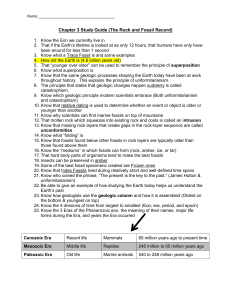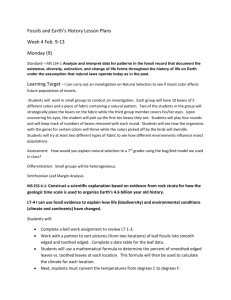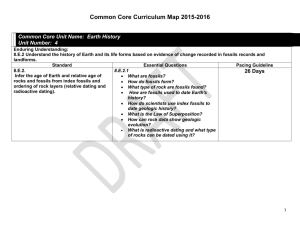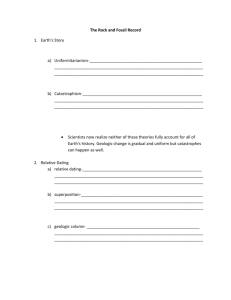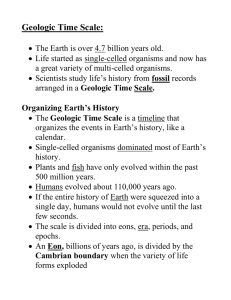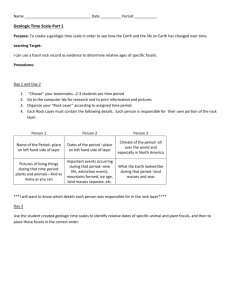click here: Study Guide
advertisement
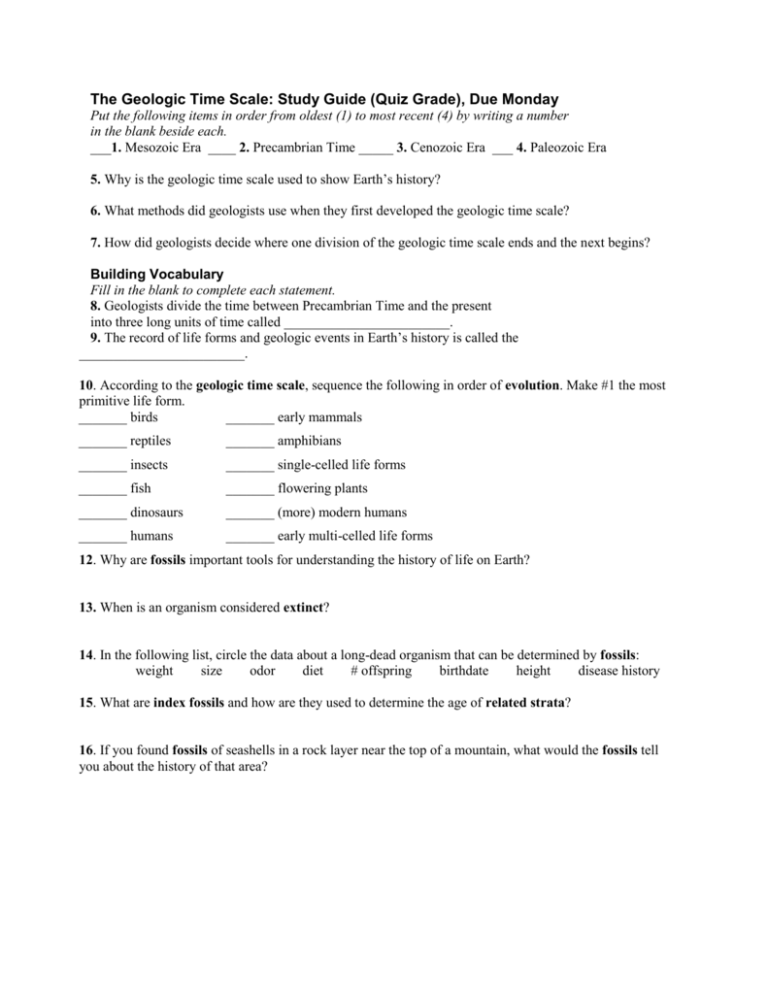
The Geologic Time Scale: Study Guide (Quiz Grade), Due Monday Put the following items in order from oldest (1) to most recent (4) by writing a number in the blank beside each. ___1. Mesozoic Era ____ 2. Precambrian Time _____ 3. Cenozoic Era ___ 4. Paleozoic Era 5. Why is the geologic time scale used to show Earth’s history? 6. What methods did geologists use when they first developed the geologic time scale? 7. How did geologists decide where one division of the geologic time scale ends and the next begins? Building Vocabulary Fill in the blank to complete each statement. 8. Geologists divide the time between Precambrian Time and the present into three long units of time called ________________________. 9. The record of life forms and geologic events in Earth’s history is called the ________________________. 10. According to the geologic time scale, sequence the following in order of evolution. Make #1 the most primitive life form. _______ birds _______ early mammals _______ reptiles _______ amphibians _______ insects _______ single-celled life forms _______ fish _______ flowering plants _______ dinosaurs _______ (more) modern humans _______ humans _______ early multi-celled life forms 12. Why are fossils important tools for understanding the history of life on Earth? 13. When is an organism considered extinct? 14. In the following list, circle the data about a long-dead organism that can be determined by fossils: weight size odor diet # offspring birthdate height disease history 15. What are index fossils and how are they used to determine the age of related strata? 16. If you found fossils of seashells in a rock layer near the top of a mountain, what would the fossils tell you about the history of that area? 17. Determine which time blocks the following events occurred. Write the name of the specific time block in the appropriate blank. All blanks will not be filled because some events are not broken down into the same time detail. . Description Eon Era Period Epoch Humans Rise of mammals Flowering plants Birds First dinosaurs/ mammals First reptiles First amphibians First insects First fish Explosion of life forms Multicelled organisms Single celled organisms 18. Fossils form in different ways. Identify the type of fossil being described in the list below. Place the name of the fossil type in the blank provided next to the description. ☺ Acids eat away the skeleton or shell and leave an impression in the rock → ______________________ ☺ This is formed when a mold fills with minerals → ______________________________ ☺ Minerals in plant cells crystallize; minerals enter openings or cavities in shell or bones → ____________ ☺ Whole organisms locked in tar pits, asphalt, amber, etc. → ______________________________ 19. Most fossils form in ____________ rock. The ____________of fossils within this type of rock layers help scientists construct the geologic time scale. 20. Sequence the following events in the fossilization process: _______ Over time, the surrounding material builds up and turns to rock. _______ The rock above eventually erodes and the fossil is exposed. _______ The remains are rapidly buried by sediment in streams. _______ An animal dies and begins to decompose. 21. In the undisturbed rock strata illustrated below, indicate in which layer you will find the oldest and the youngest fossils. Write the terms “oldest” and “youngest” in the appropriate strata. ______________________________________________________ A B C D
